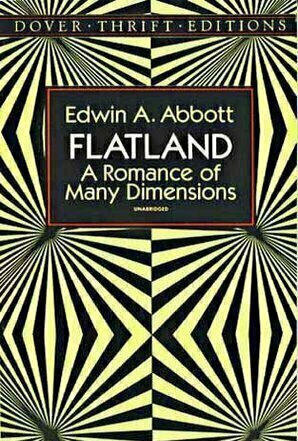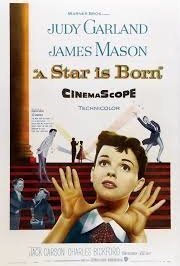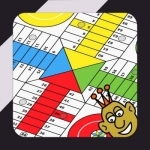
El Parchís
Games
App
Parchís is one of the most popular board games in Spain. It is an adaptation of the Indian game...
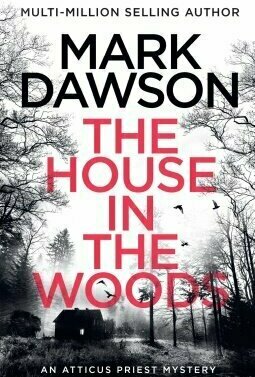
The House in the Woods (Atticus Priest #1)
Book
Four murders. Two detectives. One mystifying crime. On Christmas Eve, DCI Mackenzie Jones is...

Road To Ruin
Book
Malicious Destruction of Property. Two counts of breaking and entering. Two counts of possession...
dark romance romance contemporary

Super Big 2
Games and Entertainment
App
Big 2 is a popular poker game, with rules easy to learn. It is very dynamic and exciting intense....
Phil Leader (619 KP) rated Flatland (Enhanced Illustrated Edition) in Books
Nov 13, 2019
The book (although really a novella rather than a full novel at only 88 pages) works on two levels; firstly the story revolves around A Square, an inhabitant of the two dimensional space that is Flatland. Most of the book describes the rigid social hierarchy of the regular polygons that make up the people - the more sides a person has the higher their social standing. Irregular shapes are despised and usually executed. The second half involves investigation into the nature of dimensions when A Square first of all dreams of a one dimensional land, then is shown three dimensions and zero dimensions by a spherical person from the three dimensional land.
The first half is a satire on the rigid class system of Victorian society - it is particularly disparaging of women, who being lines rather than shapes are very much second class citizens, even having their own doors into and out of houses. This half shows the book's age, it was written in a different time and looking at it from more than 100 years later a lot of the discussion is overlong and unengaging. This part has not aged at all well.
The book only comes into its own when A Square has a dream about a land of one dimension, populated by lines of varying length, the longest line being the King of Lineland. The two dimensional dreamer attempts to persuade the King that is he could step sideways he would be able to see that his land of a single line was limited. Of course the King can conceive of no such direction as 'sideways' and rejects the suggestion as ridiculous.
A sphere from the 3 dimensional land of Space then visits Flatland, appearing as a circle of varying size as he passes through the two dimensional space. He tries to persuade Square that if he could move 'up' or 'down' he would be able to move beyond the rigid plane of his existence. Obviously the square cannot understand a direction which doesn't fall into two dimensions, until the sphere pulls him up and then he can look down to see Flatland spread out below him. He has an epiphany and is determined to spread the word on three dimensional space. The sphere also visits a zero dimensional land. However when the square suggests that if the sphere could somehow move in a new direction he might be able to enter four dimensional space the sphere is very quick to say how ridiculous such a notion is.
In this way the ideas behind dimensions are communicated quite effectively, including being able to deduce the properties of a four dimensional regular shape by extrapolating the properties of lines, squares and cubes. It is then clear how properties of higher dimensions can be calculated without our poor three dimensional minds actually being able to perceive of it.
Flatland is regarded as one of the very first science fiction novels. So is Gulliver's Travels but that has very little science and to my mind is more of a fantasy book. Despite Flatland having very little in the way of story and plot (although there are twists in the story) and the first half isn't really story at all but social commentary, it definitely describes fantastic worlds and imagines what the results would be of living in such places. This seems to me to be the very concept behind science fiction.
In conclusion, I would not recommend this to everyone as I think its appeal is quite limited. But for anyone of a mathematical bent who likes science fiction, it's always good to see where it all started.
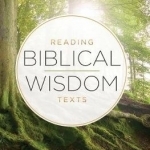
An Introduction to Reading Biblical Wisdom Texts
Book
An Introduction to Reading Biblical Wisdom Texts is designed for undergraduate students and...
Phillip McSween (751 KP) rated A Star Is Born (1954) in Movies
Jun 29, 2020
Acting: 10
Apparently her first film since four years prior, Judy Garland makes the stage sizzle playing the main role of Vicki Lester. I loved her passion and charisma and the way she delivers her lines with a charm that just lights up the screen. There are a number of other shining roles as well, including a fun performance from James Brown playing the role of Glenn Wiliams.
Beginning: 3
Characters: 10
Although you don’t really get to fully see her development until two thirds of the way into the movie, Vicki Lester is definitely a character an audience can get behind. I rooted for her success in hopes that she would steer clear of the trap the movie was clearly setting for her. That’s the thing about movies, sometimes the audience can see from a mile away something it takes ages for the characters themselves to see. The movie would have been unbearable without solid characters to carry it through.
Cinematography/Visuals: 8
Conflict: 8
There were a lot of pitfalls Vicki had to deal with along the way, namely her alcoholic husband who continues to bring her down. Had they delved into her backstory a lot quicker, I would’ve given this category a perfect score as her upbringing provided another potential pitfall for her future. Overall, with everything going on in the film, it’s clear the winding road is only leading to one place.
Entertainment Value: 8
Memorability: 7
Pace: 4
This version is the longest of the four coming in at almost three hours. Seeing how the other three were able to tell the same story with considerably less time, there is no reason for this version to be so long. It gets boring in a few spots and had me longing for the conclusion. While there are a number of shining moments, a slow pace kept this to a one-watch movie for me.
Plot: 10
Resolution: 10
Overall: 78
A Star is Born is just unnecessarily long. I was expecting a legit reason for the length but, after watching the other three movies, I was at a loss. To hold an audience’s attention for almost three hours means you need plenty of meat for your story. The movie is good, but merely one-watch good. Unfortunately that’s not quite good enough.

Endeavor (Voyagers #4)
Book
Jared: Challenging the status quo in Hollywood doesn’t make me the most popular director in...
Contemporary MMM Romance

Tudor Dawn: Henry Tudor is ready to take the crown (The Tudor Series Book 1)
Book
The rise of the Royal House of Tudor! Perfect for fans of Conn Iggulden, Robyn Young, Alison Weir...
Tudors Historical Fiction

